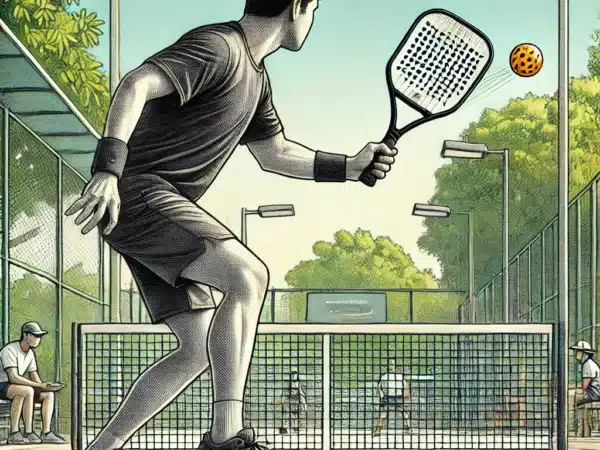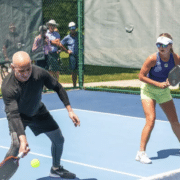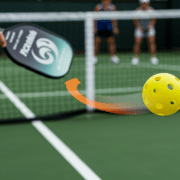Transition zone in pickleball: the secrets of skill

Today we are going to focus on one of the most important, but at the same time the most difficult zones – the transition zone, which is located between the line of the non-game zone (kitchen) and the base line.
If you are looking for a full article about the rules of pickleball, we mentioned them in this article.
Page contents
What is the transition zone in pickleball?
The transition zone is the area of the court between the “kitchen” (non-volley zone) and the baseline. It is a place where decisive moments of the match often take place. It is called “no man’s land” for a reason: it is difficult to win points here, as opponents can hit the ball right under your feet. At the same time, this is the transition zone from the baseline to the “kitchen”, where most points are usually won. Effective play in this zone is the key to success.
Most of the rallies and winning points in pickleball take place near the kitchen line. However, getting there safely and efficiently is not an easy task. The transition zone is an intermediate stage where you have to position yourself correctly in order to attack quickly and confidently from the kitchen.
How to improve the game in the transition zone?
- Motion control.
Speed is not the main thing. Do not rush to the “kitchen”. It is better to move slowly but in a controlled manner, using split-step (foot placement for quick response) in the transition zone. - Interaction with a partner (in a doubles game).
Always keep in touch with your partner. If you are at different distances from the net, it creates gaps in the defense that opponents can exploit. - Low position.
Bend your knees and keep a low stance, especially when the ball is flying high. This will improve your defense and allow you to regain your position faster. A wider stance will provide more stability. - Racket control.
Keep the racket in front of you, as there will be little time to react. Use short swings and a relaxed grip for better control. - Tactical retreat.
When you feel comfortable in the transition zone, try a tactical retreat from the kitchen line. This will give you extra time to react.
Mastering the skills of playing in this zone will allow you to increase the efficiency of your game and get more wins. Remember that constant practice and analysis of your actions is the key to success!
Frequently asked questions and answers
The transition zone is the part of the court between the non-volley zone and the baseline. It is an intermediate zone where a player moves from the baseline to the kitchen and vice versa, often deciding the fate of a play.
This area is difficult to control because opponents can easily attack the ball right under your feet, making it difficult for you to defend.
This zone allows you to safely move to the “kitchen” where most points are usually won. Effective play in the transition zone provides better control and positioning.
Use split-step to react quickly.
Move in a controlled, slow, and deliberate manner, not in jerks.
Keep a low stance with your knees bent to be ready to react quickly.
Use a wide stance to ensure better stability.
Keep in touch with your partner to avoid gaps in the defense. Both players should be on the same line so that opponents cannot attack gaps.
Keep the racket in front of you for quick reaction.
Use short swings and a relaxed grip to control your strokes.
A tactical retreat is a movement back from the kitchen line to gain more time to react. It is useful when you feel confident in the transition zone.
Rushing to the “kitchen”: Moving quickly can lead to a loss of position.
Not having a low stance: This reduces your stability and reaction time.
Ignoring your partner: Different positions in doubles play create gaps in defense.
Practice movement and positioning control regularly.
Analyze your actions after the game to avoid mistakes.
Work on strategy with your partner in a doubles game.












